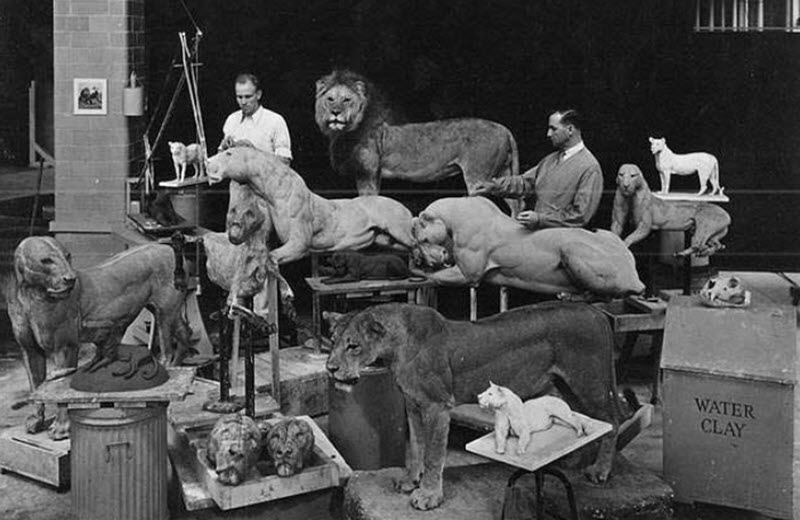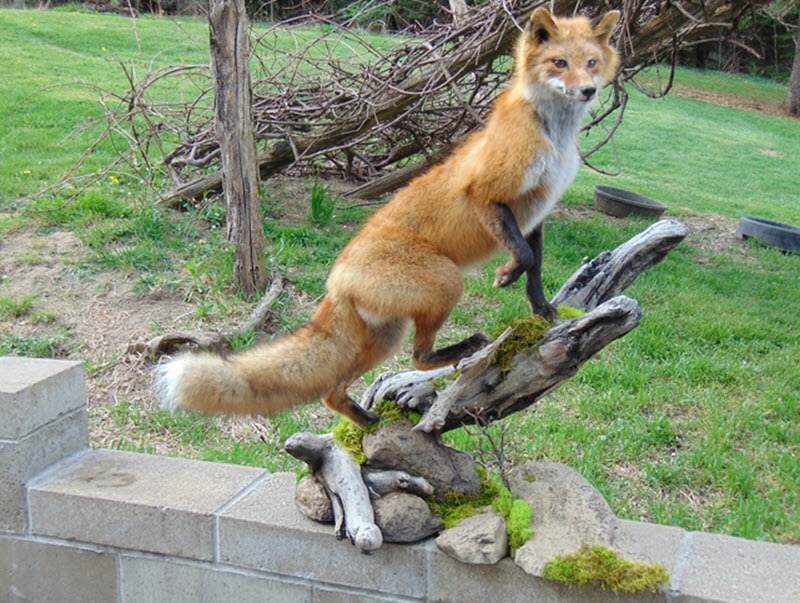Contents
Through taxidermy, parts of an animal (typically the exterior) can be preserved for display. The result is a taxidermy mount.
Taxidermy is carried out by a taxidermist.
The two classical ways of doing taxidermy is to stuff the skin of the animal (e.g. with sawdust) or mount it over an armature. The skin is preserved using chemicals such as borax and formaldehyde.

What’s a taxidermy mount?
The end product of taxidermy is a taxidermy mount.
In everyday speech, the term taxidermy is often used interchangeably for both the process and the end product.
What’s a taxidermist?
A person who practises taxidermy is called a taxidermist.
Some taxidermists are professionals, while others are hobbyists.
Why do taxidermy?
There are many reasons why taxidermy is performed. Here are a few examples:
- To preserve an animal speciment for science
- For artistic purposes
- To preserve the remains of a pet
- To disply a hunting/fishing trophy
- To preserve the remains of a historically signifant animal
- To create an interior design object
Which animals?
Taxidermy is chiefly done with mammals, birds, fish, and reptiles, and also some amphibians.
Larger insects and arachnids can also be preserved in this manner, but with smaller invertebrates the pinning method is much more common than taxidermy.

Who was John Hancock?
John Hancock was an English ornithologist who lived in 1808-1890. He is often referred to as the “father of modern taxodermy”, since he was a driving force behind the Victorian-era taxidermy trend.
Hancock was an avid hunter and taxidermist, who would shoot birds and then preserve them with the help of clay and casting plaster. At the 1851 Great Exhibition in London, he displayed a series of taxidermy mounts that generated massive interested among both scientists and the general public for their lifelikeness. The display helped ignite a new interest in taxidermy in England, from whence it spread to other parts of the world. One of the most famous collectors was Queen Victoria herself, who ammassed a splendid collection of preserved birds.
A few highlights from taxidermy history
- The mounted rhinoceros kept at the Royal Museum of Vertebrates in Florence, Italy is believed to hail from an animal that lived around the year 1500 AD. Exactly how the skin was originally preserved remains unknown.
- Around 400 years ago, a Dutch trader had a great selection of exotic birds shipped to Europe from the East Indies. Regretably, the bird keeper neglected the birds and all of them suffocated to death. The trader decided to have the birds to preserved so that he could display them. This is the earliest recorded instance of bird mounting in the Netherlands. The birds were skinned and species – also imported form the East Indies – were used to preserve the skin and plumage. Wiring and stuffing was used to mount and pose the birds in natural positions, to give them a lifelike appearance.
- Another example of early modern taxidermy is the mounted crocodile from Egypt that has been on display at the museum in St. Gall, Switzerland since 1627.
